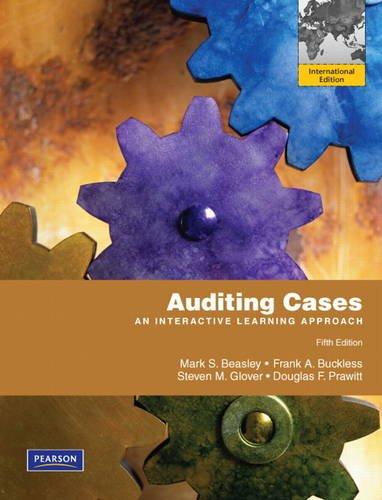Wyly Waste Management. SEC Staff Accounting Bulletin No. 108, Considering the Effects of Prior Year Misstatements When Quantifying Misstatements in Current Year Financial Statements (SAB
Wyly Waste Management. SEC Staff Accounting Bulletin No. 108, Considering the Effects of Prior Year Misstatements When Quantifying Misstatements in Current Year Financial Statements (SAB 108) was issued in 2006. The SEC stipulates that a registrant should quantify a current year misstatement using both the iron curtain approach and the rollover approach. Iron Curtain Methodthis approach quantifies the misstatement based on the amount required to correct the misstatement in the balance sheet at the period end, regardless of the misstatements year of origination. Rollover Method this approach quantifies the misstatement based on the amount of the error that originates in the current year income statement. This approach ignores the effects of correcting the portion of the current year balance sheet misstatements that originated in prior years (i.e., it ignores the carryover effects of prior year misstatements). If a misstatement is considered material to the financial statements, after all of the relevant quantitative and qualitative factors are considered, the registrants financial statements would need to be adjusted. Wyly Waste Management (WWM) is an SEC registrant and your firm is its auditor. Planning materiality for the audit is $100,000. Shortly after the end of the year, WWMs CFO is meeting with your audit partner to review the preliminary results of the audit. Your partner presents a copy of the draft unadjusted error summary to the CFO, which contains one error. During the year, WWM did not capitalize individual expenditures of less than $10,000, which is in accordance with its company policy. In the past, WWMs capital expenditures have been relatively constant each period and the expensing of the items has not caused any material errors. In the prior year two years, the expensed items totaled $7,500 and $5,000, respectively. However, in the current year, WWM undertook significant development of a new waste disposal plant. As a result, WWM incurred eight capital expenditures of less than $10,000 each that were not capitalized. These purchases totaled $75,000. Required: a. Should your partner require WWM to record an adjustment for the expensed items in the current year? Yes No b. Suppose the facts were changed and the expensed items for the prior two years totaled $22,500 and $15,000, respectively. Should your partner require WWM to record an adjustment for the expensed items in the current year? Yes No c. Given the facts as presented in b, above, how much of an adjustment should the auditor require before being willing to issue an unqualified audit opinion? (Omit the "$" sign in your response.) Minimum adjustment amount $ Wyly Waste Management. SEC Staff Accounting Bulletin No. 108, Considering the Effects of Prior Year Misstatements When Quantifying Misstatements in Current Year Financial Statements (SAB 108) was issued in 2006. The SEC stipulates that a registrant should quantify a current year misstatement using both the iron curtain approach and the rollover approach. Iron Curtain Methodthis approach quantifies the misstatement based on the amount required to correct the misstatement in the balance sheet at the period end, regardless of the misstatements year of origination. Rollover Method this approach quantifies the misstatement based on the amount of the error that originates in the current year income statement. This approach ignores the effects of correcting the portion of the current year balance sheet misstatements that originated in prior years (i.e., it ignores the carryover effects of prior year misstatements). If a misstatement is considered material to the financial statements, after all of the relevant quantitative and qualitative factors are considered, the registrants financial statements would need to be adjusted. Wyly Waste Management (WWM) is an SEC registrant and your firm is its auditor. Planning materiality for the audit is $100,000. Shortly after the end of the year, WWMs CFO is meeting with your audit partner to review the preliminary results of the audit. Your partner presents a copy of the draft unadjusted error summary to the CFO, which contains one error. During the year, WWM did not capitalize individual expenditures of less than $10,000, which is in accordance with its company policy. In the past, WWMs capital expenditures have been relatively constant each period and the expensing of the items has not caused any material errors. In the prior year two years, the expensed items totaled $7,500 and $5,000, respectively. However, in the current year, WWM undertook significant development of a new waste disposal plant. As a result, WWM incurred eight capital expenditures of less than $10,000 each that were not capitalized. These purchases totaled $75,000. Required: a. Should your partner require WWM to record an adjustment for the expensed items in the current year? Yes No b. Suppose the facts were changed and the expensed items for the prior two years totaled $22,500 and $15,000, respectively. Should your partner require WWM to record an adjustment for the expensed items in the current year? Yes No
Step by Step Solution
There are 3 Steps involved in it
Step: 1

See step-by-step solutions with expert insights and AI powered tools for academic success
Step: 2

Step: 3

Ace Your Homework with AI
Get the answers you need in no time with our AI-driven, step-by-step assistance
Get Started


